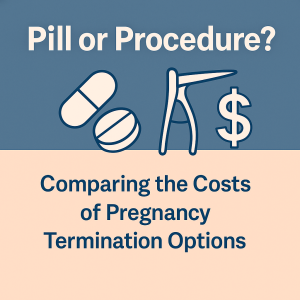How Misoprostol Operates and the Most Effective Form of Its Application
Misoprostol is a popular drug with several uses in reproductive and gastrointestinal health. It is used to perform medical abortion, labor induction, and management of postpartum hemorrhage. The most controversial topic about the drug is whether it is more effective orally or when inserted. This blog shall present an overview of how misoprostol works and examine if misoprostol is more effective orally or inserted.
How Misoprostol Operates Mechanism
Misoprostol is a synthetic prostaglandin E1 (PGE1) analogue that stimulates smooth muscle of the uterus and gastrointestinal tract. Its action mechanism differs depending on how it is used:
1. Medical Abortion
Used in medical abortion, misoprostol is usually paired with mifepristone, which inhibits the hormone progesterone, rendering the uterus sensitive to misoprostol. The medication then induces uterine contractions, resulting in pregnancy expulsion.
2. Labor Induction
In obstetrics, misoprostol is utilized to prepare the cervix and induce labor. It makes the cervix soften, dilate, and initiate contractions, making the labor process smoother.
3. Treatment of Postpartum Hemorrhage
During delivery, excessive bleeding can happen. Misoprostol causes uterine contraction, which decreases blood loss and avoids hemorrhagic complications.
4. Prevention of Gastric Ulcer
For individuals at risk of developing gastric ulcers, misoprostol prevents stomach lining injury by enhancing the production of mucus and suppressing stomach acid secretion.

Is Misoprostol More Effective Orally or Inserted?
One of the most significant questions about the use of misoprostol is whether misoprostol is more effective when taken orally or inserted. Data and clinical experience show that the route of delivery plays a crucial role in the effectiveness and side effects of the drug.
Oral Administration of Misoprostol
Oral intake of misoprostol involves swallowing the tablet so that it can be absorbed via the digestive tract. It is convenient but not without some drawbacks:
✅ Pros:
– Easy to take under non-medical supervision.
– Rapid absorption into the bloodstream.
– Some patients prefer it because it is easy to use.
❌ Cons:
– Increased risk of gastrointestinal side effects including nausea, vomiting, and diarrhea.
– Less effective than vaginal administration due to variable absorption.
– Shorter half-life, with a need for more doses to achieve maximum efficacy.
Clinical Studies on Effectiveness
A number of studies have compared the effectiveness of misoprostol when taken orally or inserted. The results uniformly indicate that:
– Intra-vaginal administration results in increased complete abortion rates in medical abortion.
– Oral administration has a quicker onset but is more likely to cause side effects.
– Sublingual (under the tongue) administration is another good alternative, with quick absorption and high effectiveness.
Best Practices for How Misoprostol Operates
To achieve the best possible effect of misoprostol, observe these guidelines depending on its route of administration:
For Oral Use:
✔ Administer with water on an empty stomach for quicker absorption.
✔ Anticipate mild to moderate cramping and potential gastrointestinal disturbance.
✔ Keep well hydrated to control impending side effects.
Knowing how misoprostol operates and where misoprostol is more effective, orally or inserted is crucial in its optimal application. Oral use has ease of use, but vaginal use has more efficacy with fewer side effects. Sublingual administration also offers a formidable alternative, a combination of the two’s best. The most effective course ultimately lies in medical advice, personal ease, and what condition is being treated.
If you’re considering using misoprostol, consult a healthcare provider to determine the best method based on your medical needs.







